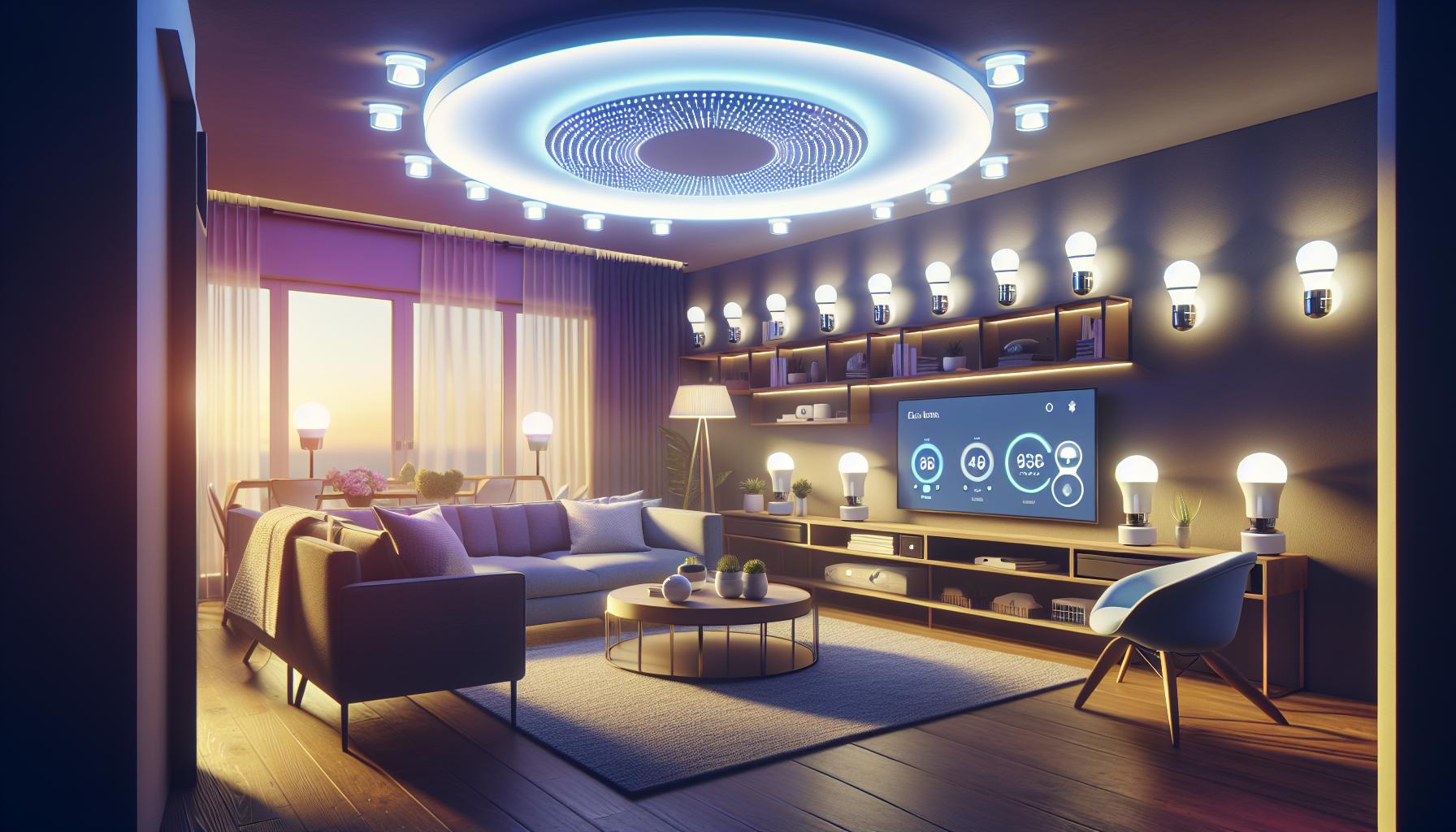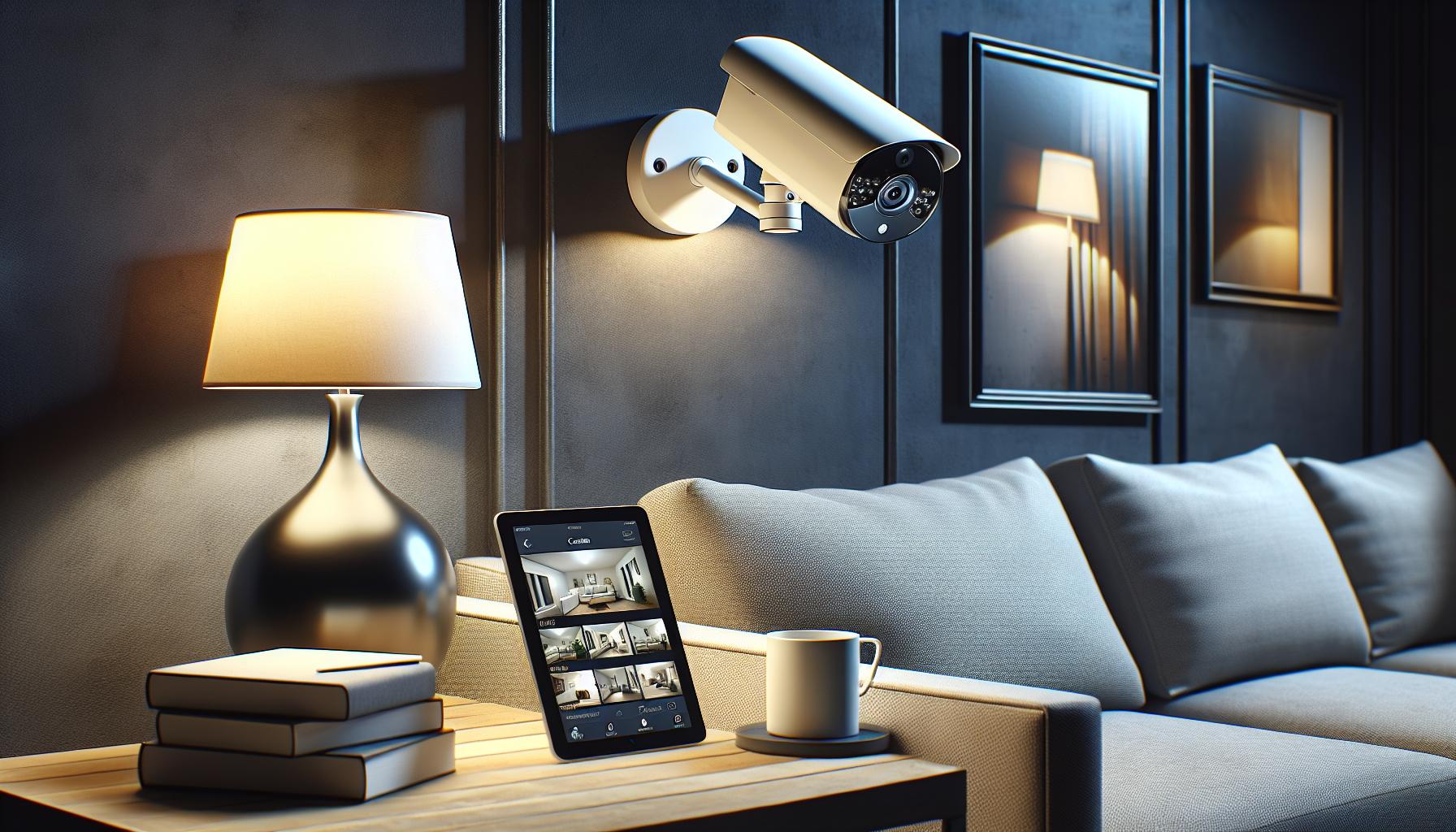Key Takeaways
- Integration of AI: Advanced smart home technology employs artificial intelligence to create systems that learn and adapt to user behaviors, enhancing overall convenience and efficiency.
- Smart Lighting Benefits: Automated lighting systems adjust based on presence and natural light, providing energy savings and personalized ambiance in living spaces.
- Enhanced Security Solutions: Modern security features like facial recognition, motion detection, and real-time alerts offer improved safety and peace of mind for homeowners.
- Voice Control Convenience: Voice-activated automation enables seamless control of various devices, enhancing user experience and simplifying daily tasks within the home.
- Energy Management Innovations: Smart thermostats and HVAC systems adapt to user patterns, optimizing energy usage and reducing utility costs while maintaining comfort.
- IoT Appliances: Internet of Things-enabled devices streamline daily chores, making tasks more efficient and convenient through remote management and smart functionality.
As technology continues to evolve, smart homes are becoming more than just a trend—they’re a lifestyle. Imagine a living space that anticipates your needs, enhances your comfort, and increases your security, all while being energy efficient. Advanced smart home ideas are transforming ordinary homes into intelligent ecosystems that adapt to their inhabitants.
From voice-activated assistants to automated lighting and climate control, the possibilities are endless. These innovations not only simplify daily tasks but also create a seamless living experience. Embracing these advanced concepts can elevate any home, making it not just smarter, but also more enjoyable and efficient. Get ready to explore some cutting-edge ideas that can take home automation to the next level.
Advanced Smart Home Ideas
Advanced smart home ideas extend the functionalities of basic automation systems, enhancing convenience and efficiency. Integration of artificial intelligence (AI) facilitates home devices that learn and adapt to user behaviors, optimizing energy consumption.
- Smart Lighting Systems: Smart lighting adapts based on occupancy and natural light availability. Intelligent sensors adjust brightness levels, creating ambiance while saving energy.
- Home Security Innovations: Advanced security systems employ facial recognition and motion detection. These technologies notify homeowners of suspicious activities through real-time alerts.
- Voice-Activated Automation: Smart speakers control various devices with voice commands. Homeowners manage lighting, temperature, and appliances seamlessly, enhancing hands-free convenience.
- Energy Management Solutions: Smart thermostats analyze usage patterns to efficiently manage heating and cooling. These systems help reduce energy bills while maintaining comfort.
- IoT-Enabled Appliances: Internet of Things (IoT) appliances improve everyday tasks. Refrigerators can suggest recipes based on available ingredients, and washing machines can be programmed remotely.
- Smart Home Hubs: These central devices connect all smart home gadgets. Homeowners control everything from one interface, simplifying management and enhancing user experience.
- Automated Blinds and Curtains: Smart window treatments adjust based on time of day or temperature. This feature optimizes natural light and contributes to energy efficiency.
- Health Monitoring Systems: Advanced sensors track indoor air quality and recommend actions. These systems can alert homeowners to allergens, humidity levels, and other health factors.
These advanced smart home ideas signify the ongoing evolution of automated living spaces, promoting a lifestyle that prioritizes efficiency, security, and user comfort.
Smart Lighting Solutions

Smart lighting solutions enhance convenience and energy efficiency in intelligent homes. These systems adapt to user preferences and environmental conditions, transforming living spaces.
Automated Lighting Control
Automated lighting control systems allow lights to adjust based on occupancy and time of day. Motion sensors detect presence, activating lights in rooms when people enter, and turning them off when they leave. Schedulers control lighting according to daily routines, ensuring lights dim or brighten at specific times. Integration with voice-activated assistants allows seamless commands, enabling users to control lights effortlessly from anywhere in the home.
Energy-Efficient Smart Bulbs
Energy-efficient smart bulbs consume significantly less power than traditional incandescent bulbs. Equipped with LED technology, these bulbs offer extended lifespans, lasting up to 25,000 hours. Smart bulbs can be dimmed or brightened remotely, optimizing energy usage. Users can choose among a variety of colors to create desired atmospheres for different occasions. Many smart bulbs support integration with energy monitoring systems, providing insights into usage patterns and costs, further promoting energy-saving practices.
Home Security Enhancements

Smart home technology significantly enhances security measures, integrating various systems that provide safe living environments.
Smart Surveillance Systems
Smart surveillance systems utilize high-definition cameras with remote access capabilities. Users can monitor live feeds from smartphones or tablets, enhancing convenience. Many systems now offer cloud storage for recorded footage, allowing for easy retrieval and review. Facial recognition technology identifies familiar faces, reducing false alarms from pets or visitors. Night vision features ensure clarity in low-light conditions, enabling round-the-clock surveillance. Integration with smart home hubs allows automation, such as triggering alerts when motion is detected.
Intruder Detection Technologies
Intruder detection technologies employ advanced methods for safeguarding homes. Motion sensors detect unusual movements and send immediate notifications to homeowners. Window and door sensors trigger alarms when openings occur unexpectedly. Smart locks offer keyless entry, enabling remote locking or unlocking through mobile apps. Some systems include glass break sensors that respond to the sound of breaking glass. Geofencing technology allows homeowners to set defined zones, alerting them if intruders access areas outside these zones, thus providing a comprehensive security solution.
Integrated Home Entertainment

Integrated home entertainment systems enhance the overall smart home experience by providing seamless media enjoyment across multiple devices. These advancements enable users to create personalized, immersive environments for entertainment.
Multi-Room Audio Systems
Multi-room audio systems deliver high-quality sound throughout a home. Speakers can be strategically placed in different rooms, allowing users to control audio from a single device. Networked systems, such as Sonos or Amazon Echo, support streaming services, delivering music, podcasts, and audiobooks instantly. Users can create playlists for different moods and occasions, adjusting volume levels in real-time. Integration with voice assistants simplifies commands, enabling hands-free operation for enhanced convenience.
Smart TV Integration
Smart TV integration connects entertainment systems to home automation networks. Users can access streaming platforms, such as Netflix and Hulu, directly from their TVs. Voice control features allow users to search for content or adjust settings with simple commands. Additionally, screen mirroring options enable seamless sharing of media from smartphones or tablets. Smart TVs can coordinate with lighting systems, adjusting brightness during movie nights for an optimal viewing experience. Compatibility with home assistants streamlines management, ensuring users enjoy centralized control of their entertainment options.
Advanced HVAC Systems
Advanced HVAC systems enhance climate control and energy efficiency in smart homes. These systems employ cutting-edge technology to analyze and respond to environmental conditions, optimizing comfort while reducing energy costs.
Smart Thermostats
Smart thermostats represent a pivotal advancement in HVAC technology. These devices learn user preferences, allowing for automatic adjustments based on patterns and schedules. For instance, Nest and Ecobee smart thermostats adjust heating and cooling based on occupancy and habits, providing personalized comfort. Many models feature remote access through smartphone apps, enabling users to modify settings from anywhere. The integration of weather forecasts allows for proactive adjustments, further enhancing energy efficiency.
Climate Control Automation
Climate control automation expands on the capabilities of smart thermostats. Systems incorporate sensors that monitor temperature, humidity, and air quality in real-time. For example, zoned HVAC systems can deliver personalized climate control in different areas of the home. Automated dampers adjust airflow based on room usage, ensuring consistent comfort throughout. Additionally, integration with other smart home devices, such as window sensors and solar shades, allows for a comprehensive approach to energy efficiency. Climate control automation not only enhances indoor comfort but also significantly lowers energy consumption by optimizing system performance based on real-time data.
Embracing Advanced Smart Home Ideas
Embracing advanced smart home ideas can significantly elevate the living experience. With technology evolving rapidly homeowners can enjoy unparalleled convenience and efficiency. The integration of AI and IoT not only enhances daily tasks but also optimizes energy use and security.
As smart homes become more sophisticated the possibilities for customization and automation continue to grow. From intelligent lighting to advanced HVAC systems these innovations cater to individual preferences and lifestyles.
Investing in these technologies not only improves comfort but also contributes to a more sustainable future. By adopting these advanced solutions homeowners can create a truly intelligent ecosystem that adapts to their needs.